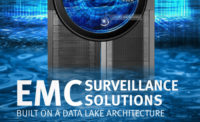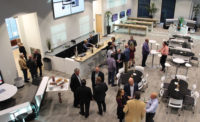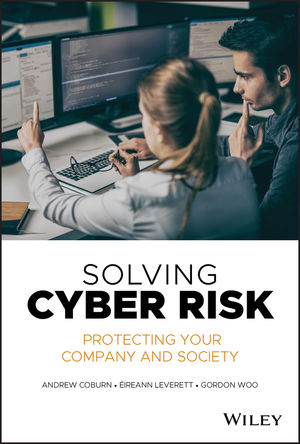It’s a decision that every security dealer has made or is in the process of making: What is the best option for monitoring? While there is no universal answer, there is a choice that is best for each company, but one that only that company can determine.
In the world of monitoring services, there are four basic types of companies: those that only provide monitoring; those that only install and service alarms and contract with wholesale central stations; those that monitor their own accounts as well as the accounts of others; and those that do their own monitoring only.
Ultimately, no model is inherently better than the other, and there is no “magic number” of accounts that would automatically mean a company should look into hosting its own central station. There are, however, several benefits in each method, and security dealers must evaluate their own needs to choose the best option or to ensure they are already using the best option.
“Really the question has to be, ‘Where can my customers get the most consistent, high-quality monitoring service?’” says Paul Sargenti, president and CEO, SAFE Security, San Ramon, Calif.
Jeff Martin, general manager, Paragon Monitoring Center, Albany, Ore., explains, “A company that is just getting started out, their income is slim to none; they’ve got to get some systems sold and installed to get money in their pockets.” He says that in these cases, a company can usually best do this by building up RMR through selling as many systems as possible and paying a third-party central station to do the monitoring.
And that doesn’t necessarily mean the goal is to eventually have your own central station. “A lot of alarm companies prefer to just sell systems and have them monitored and grow that RMR,” Martin says. “They’re not interested in having their own central station, so it isn’t a given that an alarm company when they reach a certain number of accounts will say, ‘OK now it’s time to go to the next step and have our own central station.’ That is not an assumed given in this industry.”
John Loud, president, LOUD Security Systems, Kennesaw, Ga., agrees: “When I look at my business, which I have to be top in excellence, eight, nine hours a day — a central station is a complete formation of human beings and technology, neither of which is perfect, and those guys have to be top excellence 24 hours a day.”
Loud says he has no plans of ever starting his own central station. “I, as a business person, choose to pay a fixed, flat rate and be able to mitigate my risk and ‘senile’ factors onto one check a month to know that I’ve got the right strategic partner.”
Of course because it is a partnership, choosing a partner that is best for you is of utmost importance. “A lot goes into the evaluation of that right strategic partner,” Loud says, “as well as ongoing evaluation, because again, it’s human beings and technology.” (See sidebar “Tips for Choosing a Third-Party Central Station” on page 24, as well as an article about John Loud’s journey, “Loud Security’s Central Station Search,” online at www.SDMmag.com/loud-securitys-central-station-search.)
Third-party central stations offer a wide range of benefits to dealers, including the ability to invest in things a dealer may not have the time or resources for. “Good third-party central stations are technologically up-to-date; they’re capable of monitoring different signal platforms, such as video, digital, as well as PERS,” Sargenti says. “They may have the capacity to monitor various signal formats that are more difficult for a sole proprietor to monitor on their own without significant expense.”
Pam Petrow, president, Central Station Alarm Association International (CSAA), Tysons Corner, Va., shared some takeaways from a recent panel discussion CSAA hosted and she moderated: “You can’t have access to some of the things that a wholesale environment can provide if you’re just a smaller central station and don’t have the financial resources to commit to the monitoring center because you may be committing them somewhere else in your business — maybe to drive sales or to improve sales efficiencies, installation efficiencies, service efficiencies or billing.”
Cost is certainly factor, as well. “It’s definitely less expensive in a wholesale environment,” Petrow says. “If you’re looking at dollar-for-dollar, if you have your own monitoring facility, it’s probably going to cost you more per account to monitor because that’s just the nature of economies of scale.”
Security dealers considering taking on their own monitoring must take into account the possible lack of expertise in the area, the investment that would be necessary in technology, building, products, infrastructure and the investment that would be necessary if the goal was to become UL listed.
However, a company also can benefit from hosting its own central station. Kevin Mahoney, president, Mahoney Alarms, Glens Falls, N.Y., says Mahoney Alarms hosts its own and always has, calling it a “marketable decision.”
“When I started here 44 years ago,” Mahoney says, “you would build an alarm system for the customer. You would go and interview the customer then design an alarm system for the customer’s specific needs. Nowadays, a new market approach is emerging; companies are not actually selling a package designed for that customer. They are selling a pre-priced, predesigned package online.”
Because of that, Mahoney says the decision is one based on how you as a dealer choose to operate. “It’s not cheaper to do your own monitoring; it is a more personal connection to your customers,” he says. “When you have a human answer the phone 24 hours a day, 365 days a year, they have a more personal connection. People are willing to listen to you when you design a system.”
Mahoney says although companies that use a third-party can certainly still have a personal touch, “in most cases it would tend toward less personal contact with your customer because now you don’t have to have someone there 365.”
Another aspect that makes running a central station in-house appealing is the control a company retains. “First and foremost we are in control,” says Wanda Griffith, central station manager, The Protection Bureau, Exton, Pa. “We can customize products and processes based on our customers’ specific needs. We are an integration company; therefore, the services and products that we provide to our customer offer a complete security solution. We are local, involved in the community and can quickly build rapport with the customers. The customers know our employees, they are comfortable with them, building trust and longevity into our relationships.”
Sargenti cautions those contemplating a switch: “If you’re big enough and you can lower your account servicing cost by having your own central station because you already have the capacity to do that; and you have the skillset and the management resources to run a central station, then it makes all kinds of sense for you to do that. But if you don’t have that skillset built into your management team or the physical space and resources to have a central station — because building a central station is not trivial; it requires a lot of expertise — then your best bet is to, yes, pay a little bit more and have the third-party central station do the work.”
As a company weighs its options, the question really becomes more than simply whether to host in-house or hire a third-party central station. It really comes down to what is your business and where do you want to concentrate your resources? Petrow explains that the entire CSAA annual meeting focused on: “How do you look at your business? What’s it going to look like in two years, three years, five years? What are some things you need to be doing, trends you need to be aware of? Even if you are keeping your own monitoring facility, should you be doing it in the cloud or should you be doing it locally? So it’s more than just about having your center or using a third party. If you’re going to have it, what does your center look like? What’s it going to take to get there and how much risk do you want to assume?”
The question does not, as maybe some thought in the past, come down to simply a matter of numbers. In addition to weighing cost versus value, says Alan Gillmore IV, president, Gillmore Security Systems, Oakwood Village, Ohio, a company should look at several other factors, including potential synergies from leveraging the team to improve operational and administrative efficiencies; a company’s ability to stay educated and deploy the appropriate technology; and the scheduling and training of a 24-hour center. “Does it help you differentiate from the competition in your market and does your customer see the value?” he asks.
The decision a company makes about how to monitor its subscribers must be the one that is best for that company, its employees and its customers, but it is one of the most important decisions any company will make.
How Does a Company Remain Technologically Advanced & Efficient?
When a company has made the conscious choice to do its own monitoring, that company is choosing to make a significant financial and operational investment in monitoring services. Any company doing this should do so with both eyes wide open. Whether a company is just switching to an in-house central station or has always had one, there are several steps a company should take to ensure its central station remains technologically advanced and efficient.
“Stay involved and informed,” says Wanda Griffith, central station manager, The Protection Bureau. “Encourage roundtable discussion on trends and end-of-life issues which include affected departments and upper management on a regular basis.
“Running your own central station doesn’t afford you any opportunity to overlook any issues. To be successful you must be efficient in all aspects of the central station. You must remain knowledgeable and current with industry standards and technological trends.”
Alan Gillmore IV, president, Gillmore Security Systems, says, “It is critical to network with other companies that provide the same services and engage with industry associations like CSAA and ESA to make sure you keep up with best practices in technology deployment and dispatching procedures as well as changes in the legislative landscape. Strong relationships and active industry involvement keep us at the leading edge of best practices within the industry.”
Tips for Choosing a Third-Party Central Station
Choosing the right central station is critical. A company might save money, but if the central station isn’t meeting the needs of that company and its customers, then it is ultimately a failed endeavor. To help a dealer make the right decision, Paul Sargenti, president and CEO, SAFE Security, advises them to do a little research.
“Talk to people in your alarm association,” he says. “Talk to people who are already going to a third-party central station, and ask for their experience. And then do your homework. There is an abundance of information about third-party central stations in the alarm industry; contact them. Ask them about their platform. Ask them about their rates and the pricing grid you hope to be at. The other thing I would ask is, find out what access you would have to the central station senior management. So if there is a problem and you need to have it addressed, you know you’re going to get the attention of decision makers. And then make your choice.”
Jeff Martin, general manager, Paragon Monitoring Center, advises, “First shop around. Call me. Don’t just talk to me; talk to several central stations. Central stations are not all exactly the same; they’re not all cut from the same cookie cutter. Some are going to have some services and features that others don’t.”
One thing that is imperative, however, is making choices early on that will afford you flexibility down the road. “First and foremost, get your own IP addresses and your own 800 numbers to use,” Martin says. “Those would probably be the two most important pieces for anybody who thinks that at some point in time they may want to move their accounts out of a central station either to another central station or to their own. And that’s not commonly done, so that would be probably my biggest two pieces of advice.”
More Online
For more on central station monitoring, visit SDM’s website, where you’ll find the following articles:
“Monitoring the Shape of Things to Come in the Security Industry”
www.SDMmag.com/monitoring-shape-things-to-come
“Central Station Monitoring Standards”
www.SDMmag.com/central-station-monitoring-standards
“Central Station Manager Best Practices”
www.SDMmag.com/central-station-manager-best-practices







